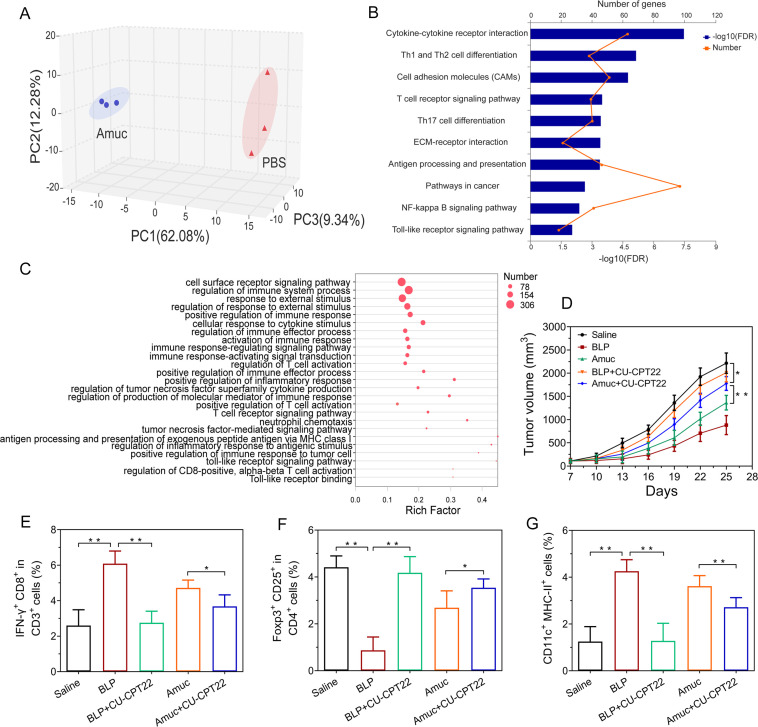Figure 6.
Mechanism study of Amuc in inducing antitumor-specific immune responses. (A–C) The involvement of immune responses in the tumor-infiltrating lymphocytes treated with Amuc. (A) 3D-principal coordinate analysis (3D-PCoA) analysis of the gene expression profiles. (B) Kyoto Encyclopedia of Genes and Genomes (KEGG) pathway enrichment analysis of the identified differentially expressed genes. (C) Gene ontology (GO) enrichment analysis of the identified differentially expressed genes involved in the immune functions. (D–G) The involvement of TLR2 pathway in the antitumor effects of Amuc in tumor-bearing mice, BLP acts as a TLR1/TLR2 agonist while CU-CPT22 acts as a TLR1/TLR2 antagonist. (D) Tumor growth under different treatment in CT26 tumor-bearing mice (n=6). (E) The proportions of IFN-γ+ CD8+ in CD3+ T cells in tumor-draining lymph nodes. (F) The proportions of Foxp3+ CD25+ in CD4+ T cells in tumor-draining lymph nodes. (G) The proportions of CD11c+ MHC-II+ cells in tumor-draining lymph nodes. All data are shown as mean±SD (*p<0.05, **p<0.01). BLP, bacterial lipoprotein; ECM, extracellular matrix; FDR, false discovery rate; IFN, interferon; MHC, major histocompatibility complex; NF-κB, nuclear factor-κB; PBS, phosphate-buffered saline; TLR2, toll-like receptor 2.

